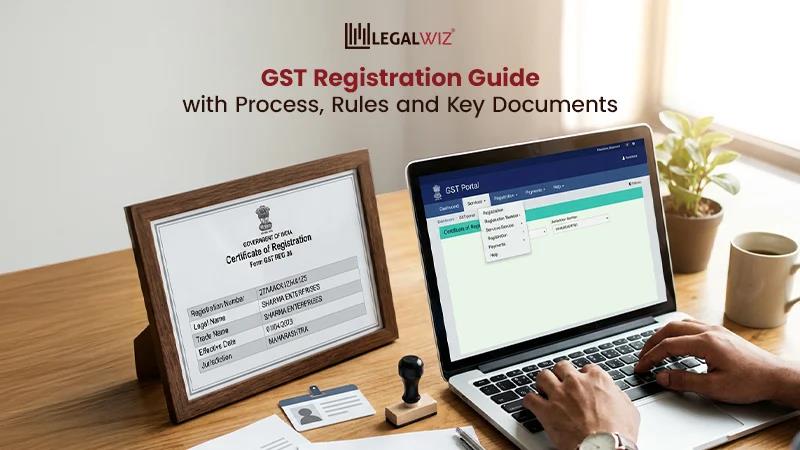Change Company Name: Procedure in India Explained Step by Step
When you change a company name under the Companies Act, 2013, it simply means replacing the name on the company’s certificate of incorporation with a new registered name. It is a legal amendment to the company’s records, not the creation of a new entity or a reset of its rights and liabilities.
The Registrar of Companies handles name availability checks and the filing formalities, and where required, the Central Government gives final approval. This guide provides a clear, step-by-step walkthrough of the forms, filings, timelines, and common pitfalls so you can complete the change without surprises.
Why Companies Decide to Change Their Name
There are reasons why businesses change their names. Most of the time, the choice is based on what is practical, what is strategic, or what is legal. Some of the most common reasons a firm might desire to alter its name are:
| Reason | Explanation |
| Voluntary Decision | A company may choose a new name to refresh its identity or mark a new beginning. The change is valid if the legal steps under the Companies Act, 2013 are followed. |
| Change in Business Activity | If the company enters a new line of business, the current name may not fit. In such cases, the name is updated along with the Memorandum of Association. |
| Marketing or Rebranding | A name change can help improve brand visibility, connect with a new audience, or match current market trends. |
| Change of Ownership | After a merger or acquisition, a new name is often adopted to reflect the new management and brand direction. |
| Avoiding Trademark Issues | If the name conflicts with an existing trademark, changing it helps avoid legal trouble and protects the brand. |
| ROC Instructions | The ROC may instruct a company to change its name if another entity proves prior rights. The company must then select a fresh, acceptable name. |
| Popular Product Advantage | When a product is more popular than the company itself, adopting the product name helps build stronger public recall. |
Change of Company Name Legal Requirements
The Companies Act, 2013, governs the process of changing a company name. The key provisions are found under Sections 13 and 14. These sections explain how a company can update its MOA and AOA to include the new name, and what approvals are needed from shareholders and the government.
Here’s what the law requires:
- Special resolution: The company must pass a special resolution in a general meeting, approving the name change.
- Approval from authorities: The change must be approved by the Registrar of Companies (ROC) and, where necessary, by the Central Government.
- Filing with ROC: All related documents and forms must be filed on the MCA portal for the official record.
- No impact on legal status: Changing the name does not create a new company. The entity remains the same.
- Rights and obligations remain intact: All assets, liabilities, contracts, and ongoing legal proceedings continue without interruption.
This legal process ensures that the change of name is valid, transparent, and fully compliant with company law.
| To understand how company decisions are approved and documented, read our guide on the difference between special and ordinary resolutions. It explains their purpose, voting requirements, and when each type is used. |
Documents Required for Company Name Change
Companies must submit specific documents to the Registrar of Companies (ROC). These serve as proof of approval, authority, and compliance under the Companies Act, 2013.
Here’s the complete list:
- Certificate of Incorporation
- Altered Memorandum of Association (MOA) and Articles of Association (AOA)
- List of Directors and Shareholders
- Digital Signature Certificate (DSC) of the Authorized Director
- Proof of Registered Office Address
Submitting these documents ensures that the application is valid, properly authenticated, and ready for approval by the ROC.
Step-by-Step Procedure for Changing Company Name
The procedure for the change of name of a company under the Companies Act, 2013, involves several stages of approval and filing. Each step must be completed carefully to ensure compliance.
Step 1: Pass a Board Resolution
- Hold a Board Meeting to propose the change of the company name
- Authorize a Director or Company Secretary to check name availability and call an Extraordinary General Meeting (EGM)
For more details on the rules and procedures governing special meetings under the Companies Act, see our guide on what is Extraordinary General Meeting (EGM). It explains when they are called, how notice is given, and how resolutions are passed.
Step 2: Check Name Availability (RUN Application)
- Apply for name reservation through the RUN (Reserve Unique Name) facility on the MCA portal
- Ensure the proposed name is not identical or too similar to an existing company or registered trademark
- Avoid restricted words listed under the Companies (Incorporation) Rules, 2014
Step 3: Pass a Special Resolution
- Conduct the Extraordinary General Meeting (EGM) as scheduled
- Pass a special resolution approving the name change
- Approve the corresponding amendments to the Memorandum of Association (MOA) and Articles of Association (AOA)
To understand the key legal documents that define a company’s structure, read our guide on the difference between MOA and AOA. It explains their meaning, purpose, and how they work together in company formation.
Step 4: File Required Forms with the Registrar
a) Form MGT-14
- File Form MGT-14 within 30 days of passing the special resolution
- Attach the following documents:
- Certified copy of the Special Resolution
- Notice of EGM and Explanatory Statement
- Altered MOA and AOA
To know the documents and steps involved in filing, check out our detailed guide on how to file MGT Form-14. It explains the filing process, required attachments, and key compliance tips.
b) Form INC-24
- File Form INC-24 after submitting MGT-14 (use the SRN reference from MGT-14)
- Attach supporting documents, including:
- Certified minutes of the EGM
- Member voting details
- Approvals from SEBI, RBI, or IRDA, if applicable
- Altered MOA and AOA
- Detailed reasons for the name change
Step 5: Receive New Certificate of Incorporation
- Once the application is approved, the Registrar of Companies (ROC) issues a new Certificate of Incorporation reflecting the updated company name
- The change of name becomes legally effective only after this certificate is issued
Following these steps ensures that the process is smooth, compliant, and officially recognised under the Companies Act, 2013.
Post-Approval Compliance for a Company
Once the Registrar of Companies (ROC) issues the new Certificate of Incorporation, the company must update its new name across all official and operational records. This ensures consistency and avoids legal or administrative issues later.
| What to Update | Action Required |
| MOA and AOA | Replace old name with the new name in all copies |
| Company seal & official documents | Update seals, letterheads, invoices, receipts, and other printed materials |
| Bank accounts & financial instruments | Inform banks to update the company name on accounts, checks, and instruments |
| Tax authorities & registrations | Update PAN, TAN, GST, EPF, ESI, and other relevant registrations |
| Company website, stationery & business cards | Reflect new name on digital platforms, printed stationery, and business cards |
| Licenses, permits & statutory registers | Amend all licenses, permits, and statutory registers to show new name |
| Employment contracts & business agreements | Update contracts, vendor agreements, and client documents with new name |
Completing these updates ensures that the company’s new identity is legally recognized and consistently represented across all platforms and records.
Key Points to Remember When You Change a Company Name
- No new company is created: Changing the name does not form a new legal entity. The company continues as the same entity with all its rights and obligations.
- Legal rights and obligations remain intact: All contracts, assets, liabilities, and ongoing legal proceedings remain valid.
- Timely filings are crucial: Forms MGT-14 and INC-24 must be filed within the statutory timelines to avoid delays or penalties.
- Avoid name conflicts: Ensure the new name does not conflict with existing trademarks, registered company names, or restricted words.
These points help ensure a smooth and legally compliant name change process.
Conclusion
Changing a company’s name is a structured but manageable process when approached carefully. Proper planning, accurate documentation, and adherence to legal requirements are essential to avoid delays or compliance issues.
Working with experts can make the process smoother and error-free, even though you can handle it independently. At LegalWiz.in, we guide businesses through every step, ensuring all filings and approvals are completed correctly and on time. With us, you can swiftly, affordably, and fully compliantly change your company name online.
Frequently Asked Questions
Can a company change its name if it has pending legal cases?
Yes, a company can change its name even if legal cases are pending. The name change does not affect ongoing legal proceedings—they continue under the new name, and courts are informed of the change through official documents.
Can I change my company’s name without changing my PAN or GST number?
Yes. The PAN, TAN, and GST numbers remain the same even after a company name change. However, you must update these records to reflect the new name to maintain consistency and avoid compliance issues.
Is it possible to change a company name more than once?
Yes, there is no legal limit on how many times a company can change its name. However, frequent changes may create confusion among stakeholders and may require additional justification for approval by the ROC.
Does a name change affect existing trademarks or brand registrations?
Changing a company name does not automatically update your trademarks or brand registrations. You must separately apply to the Trademark Registry to record the name change and maintain ownership rights.

Sapna Mane
Sapna Mane is a skilled content writer at LegalWiz.in with years of cross-industry experience and a flair for turning legal, tax, and compliance chaos into clear, scroll-stopping content. She makes sense of India’s ever-changing rules—so you don’t have to Google everything twice.







